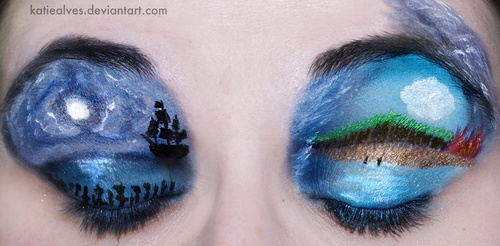Little planet photography is clearly a popular pastime given the thousands of photos you see on Flickr. The Create your own planets group is a great example. Some of the images are just bizarre and surreal, and others are magically beautiful.
Catherine Nelson, who describes herself as a painter with a camera, uses her experience in creating visual effects for films like 300, Troy, and Moulin Rouge to produce some of the most incredibly beautiful spherical panoramas.
Nelson takes hundreds of photos of her surroundings during the different seasons, and then spends months digitally stitching them together to create the most picturesque planetoids. You must seem them, after the jump.





